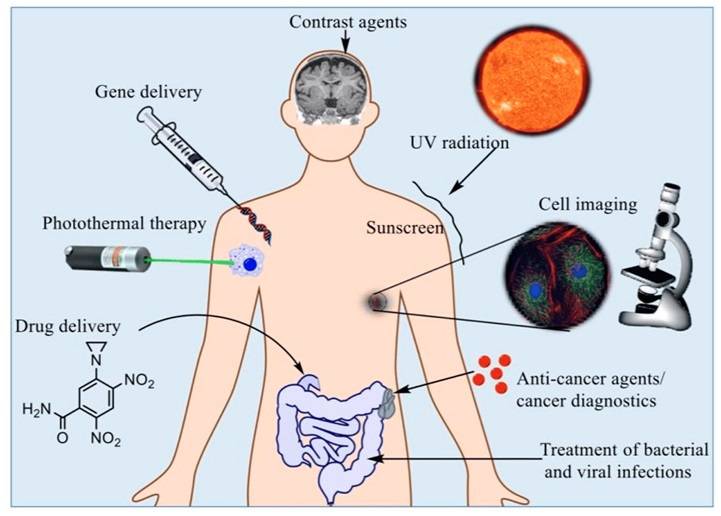Introduction
In the relentless battle against cancer, early detection remains a cornerstone of successful treatment outcomes. Traditional diagnostic techniques often have limitations in terms of sensitivity, specificity, and invasiveness. However, the advent of magnetic nanoparticles (MNPs) in cancer imaging has introduced a promising avenue for non-invasive, highly sensitive detection of cancerous lesions. By harnessing the unique properties of MNPs, researchers are revolutionizing cancer detection methods, offering new hope in the fight against this devastating disease.
Understanding Magnetic Nanoparticles
Nanotechnology in Medicine
Nanotechnology has revolutionized various aspects of medicine, particularly in the field of cancer diagnosis and treatment. At the forefront of this revolution are magnetic nanoparticles, engineered particles with dimensions ranging from 1 to 100 nanometers. These nanoparticles possess magnetic properties that make them highly responsive to external magnetic fields, enabling precise manipulation and targeting within biological systems.
Uses of Nanomedicine
Nanomedicine encompasses a wide range of applications, including drug delivery, imaging, and diagnostics. In cancer detection, magnetic nanoparticles play a crucial role as contrast agents in magnetic resonance imaging (MRI) and magnetic particle imaging (MPI). These advanced imaging modalities leverage the unique magnetic properties of nanoparticles to visualize and characterize cancerous lesions with unprecedented sensitivity and spatial resolution. Uses of nanomedicine in cancer imaging extend beyond mere contrast enhancement, enabling precise localization of tumors and facilitating early detection, thus revolutionizing the diagnostic landscape.
Magnetic Nanoparticles in Cancer Imaging
Principles of Magnetic Resonance Imaging (MRI)
MRI is a powerful imaging technique widely used in cancer diagnosis and staging. It relies on the interaction between magnetic fields and hydrogen nuclei within the body to generate detailed images of anatomical structures. By introducing magnetic nanoparticles as contrast agents, researchers can enhance the contrast between normal and cancerous tissues, improving the detection and characterization of tumors.
Magnetic Particle Imaging (MPI)
Magnetic Particle Imaging (MPI) is a novel imaging modality that directly detects the spatial distribution of magnetic nanoparticles within the body. Unlike MRI, which relies on indirect signal detection, MPI directly measures the magnetization of nanoparticles, offering superior sensitivity and quantitative imaging capabilities. In cancer detection, MPI holds promise for early detection of small tumors and monitoring of therapeutic response with high precision.
Advantages of Magnetic Nanoparticles in Cancer Detection
Enhanced Sensitivity and Specificity
One of the key advantages of magnetic nanoparticles in cancer imaging is their enhanced sensitivity and specificity compared to traditional imaging agents. By functionalizing nanoparticles with targeting ligands, researchers can achieve selective accumulation within cancerous tissues, improving the contrast between tumor and normal tissues. This targeted approach enhances the sensitivity of imaging techniques, allowing for early detection of cancerous lesions with high accuracy.
Non-Invasive and Real-Time Imaging
Magnetic nanoparticle-based imaging techniques offer non-invasive and real-time visualization of cancerous lesions, providing valuable insights into tumor morphology, size, and location. Unlike invasive procedures such as biopsy, which carry inherent risks and limitations, magnetic nanoparticle imaging allows for repeated imaging sessions without adverse effects. This non-invasive approach is particularly beneficial for monitoring disease progression and assessing treatment response over time.
Personalized and Precision Medicine
The use of magnetic nanoparticles in cancer detection enables personalized and precision medicine approaches by tailoring imaging strategies to individual patient characteristics. By leveraging the unique magnetic properties of nanoparticles, researchers can design custom imaging protocols that optimize sensitivity and specificity for specific tumor types and locations. This personalized approach ensures accurate diagnosis and facilitates targeted treatment strategies, leading to improved patient outcomes.
magnetic nanoparticles for cancer imaging
Despite the remarkable progress in magnetic nanoparticles for cancer imaging, several challenges remain to be addressed. These include optimizing nanoparticle properties for enhanced tumor targeting and retention, improving imaging resolution and sensitivity, and ensuring long-term safety and biocompatibility. Additionally, regulatory approval and clinical translation of magnetic nanoparticle imaging technologies require further validation through rigorous preclinical and clinical studies.
Looking ahead, ongoing research efforts are focused on developing next-generation magnetic nanoparticles with improved imaging performance and multifunctional capabilities. These advanced nanoparticles hold the potential to revolutionize cancer detection methods, offering unparalleled sensitivity, specificity, and real-time imaging capabilities. With continued investment in research and development, magnetic nanoparticle-based imaging technologies are poised to transform cancer diagnosis and management, ushering in a new era of precision oncology.

